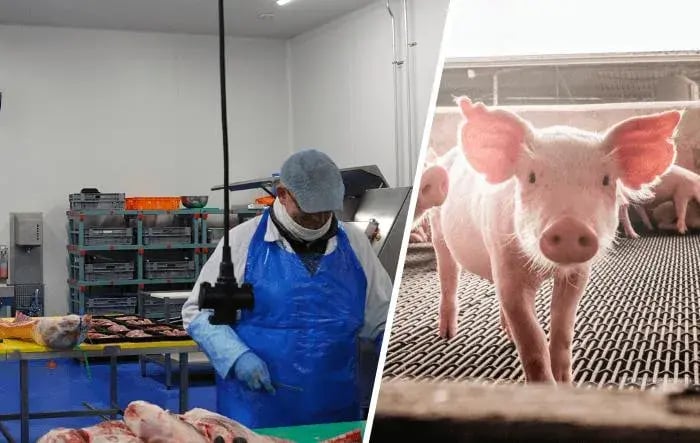Reduction of antibiotics in pig farming for better hygiene

Pig farming has – just as all other sectors in intensive livestock farming – taken substantial steps since 2007 to lower the usage of antibiotics. This drop may also be continued even further over the next few years, among other things, by applying optimum personal hygiene.
In the period from 2009 to 2020, in intensive pig farming, antibiotic usage has fallen by no less than 69.9 percent. It dropped rapidly over the first few years, after which the fall flattened off. Logically, because in the first few years most companies – which previously had not yet done anything to reduce antibiotic usage – implemented significant measures that led to a substantial fall in usage. But even now, there are still steps that can be taken to reduce antibiotic usage even further. That attention on this has not reduced can be seen from the fact that in 2019, pig farming again achieved an antibiotic reduction of 8.2 percent in relation to the previous year.
IMPROVEMENT OF PERSONAL HYGIENE
Where farm advisors were able to walk in and out of the shed before 2007 – without taking hygiene measures – that has absolutely not been possible in the last decade. But that does not mean that every pig farmer has everything in complete order in the area of personal hygiene. So, there are still steps that can be taken for this, including making the hygienic entrance more professional with products and measures that make it easier to maintain the hygiene protocol.
LOWERING INFECTION RATES
Usage of antibiotics is necessary whenever a disease breaks out within the shed walls. The higher the infection rate at a facility, the greater the chance that this happens. Good hygiene ensures that this infection rate is lowered. By good hygiene, not only do we understand cleaning and disinfecting the shed, but also providing for controlled access to the animals. Only visitors who really have to come close to the animals – such as vets – get access to the shed and they have to keep to the hygiene protocol.
WASHING AND DISINFECTING HANDS
At facilities where there is no shower, visitors are to put on the facility's own shoes or boots and preferably also work clothing in the changing room. A clean work overall or possibly a disposable overall also need to be worn. Hands must be thoroughly washed and if possible, also disinfected. Boots are disinfected before entering the shed area in the boot brush or disinfection tank. Gloves, a dust mask and hair net may be used. Every measure stated provides for further reduction of the risk of disease coming in.
GUARANTEEING THE HYGIENE PROTOCOL
As a pig farmer, you can take measures to be able to guarantee the hygiene protocol more simply. The better and more professionally you have set up your hygienic entrance, the easier that becomes. This will then justify the investment that you make in this. Is your hygienic entrance not in order and is the hygiene protocol not simple to follow? Then there is a greater chance that you or your visitor bring infectious germs into the facility. The result? Your animals get ill and the use of antibiotics is necessary. After all, that – together with other factors such as more waste from animals – ensures a cost item that is many times higher than the investment in good personal hygiene.
more information
Do you want to know what the options are for your pig farm in the area of personal hygiene? Then download our special hygiene toolkit now.
.webp)



.jpg?width=600&height=300&name=83203100%20-%20DZD-1000-R%20(3.1).jpg)

